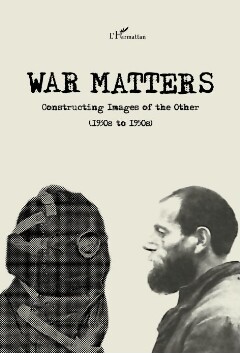Page 24 [24]
22
Dagnoslaw Demski, Liisi Laineste, Kamila Baraniecka-Olszewska
tation around ‘difference’ and ‘otherness’ have changed” or do earlier convictions,
for example ways of depiction, remain intact through different periods. This is still
an open question with related examples in the present-day political arena where
injustice, oppression and conflicts loom.
Although many of the questions the authors tried to answer in this volume are
still open and relevant in today’s cultural, political and social situation, we would
like to give special attention to the global war, WWIL as a particular circumstance
which, by affecting all aspects of life, also affected the ways of conceptualising,
denoting, recognising and representing the Other. Following on from the
conclusions drawn by chapter authors we realise that otherness gains a particular
role during wartime. It is ideologically manipulated, shaped and construed and
becomes a tool of social engineering in order to allow particular groups to achieve
their political goals or validate their deeds. At the same time otherness remains
an element of local or national culture which derives its content from tradition
and social relations. These notions of otherness interweave with each other during
wartime, confronting people with a density of meanings that are significantly
present in their new forms of representation. The ways that images of the Other
change or are reworked from old images to suit better the purposes of war is central
to the present book because it gives us a unique opportunity not only to see some
reflections of political and social relations during WWII in images from the period,
but also—and above all—to bring us to an understanding of the role that was
ascribed to othering, to how this particular process was developed, and how it was
perceived by the general audience, the people whom propaganda targeted.
References
Apel D. (ed.) 2012. War Culture and the Contest of Images. New Brunswick-London: Rutgers University
Press.
Bhabha H. 1986. Foreword: Remembering Fanon. In: Fanon E (ed.) Black Skin, White Masks. London:
Pluto Press, pp. vii-xxvi.
Butler J. 2010. Frames of War: When Is Life Grievable? London: Verso.
Caricature. In: Attardo S. 2014 (ed.) Encyclopedia of Humor Studies. Los Angeles & London: Sage Publica¬
tions, pp. 103-105.
Davies C. 2002. Mirth of Nations. New Brunswick & London: Transaction Publishers.
Hall S. (ed.) 1997. Representation: Cultural Representations and Signifying Practices. London & Thousand
Oaks: Sage Publications.
Hempelmann C. & Samson A. 2008. Cartoons: Drawn Jokes? In: Raskin V. (ed.) The Primer of Humor
Research. Berlin: Mouton de Gruyter, pp. 609-640.
Kempf W. 2014 Historia fotografti. Od Daguerrea do Gurskyiego (‘History of Photography. From Daguerre
to Gursky’). Krakow: Universitas.
Sontag S. 2003. Regarding the Pain of Others. London: Penguin.

